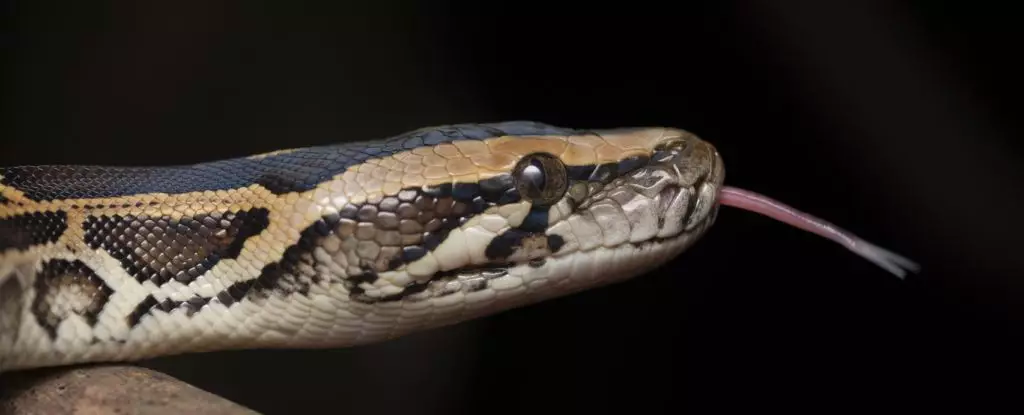Nature never ceases to astonish with its extraordinary adaptations, and recent discoveries regarding Burmese pythons offer a window into a biological ingenuity that defies common expectations. These snakes, often dismissed as simple predators, harbor complex internal mechanisms that facilitate the complete digestion of prey bones—an ability that challenges our previous understanding of vertebrate digestion. The discovery of a previously unknown cell type in their intestines marks not just a scientific breakthrough but a testament to evolution’s relentless drive to optimize survival in the harsh realities of the wild.
This novel cellular architecture underscores how species fine-tune their physiology to meet specific dietary needs. Unlike animals that regurgitate or pass bones undigested, snakes have evolved a cellular toolkit that allows them to absorb and process mineral-rich skeletal remains effectively. The realization that these cells help manage calcium and phosphorus overloads redefines notions of digestive efficiency and highlights the nuanced relationship between form and function—a relationship shaped over millions of years of natural selection.
While the focus on Burmese pythons might seem esoteric, the implications ripple across our understanding of biological systems. It compels us to reconsider assumptions about digestive limitations and the potential precedents such adaptations set for other species, including humans. These findings shine a light on a form of biological resilience that could inspire innovations in medicine and nutrition—if we manage to decode and replicate such mechanisms.
Challenging Traditional Views of Digestion and Nutritional Limits
For years, the prevailing narrative in biology was that vertebrates possess a finite capacity to absorb nutrients—particularly minerals like calcium and phosphorus. When prey bones are swallowed, either passively or via regurgitation, it suggests an underlying limitation to what the digestive system can handle. Yet, snakes like the Burmese python challenge this notion. Their ability to devour prey whole, bones and all, without vomiting or passing undigested fragments indicates a highly specialized internal process.
The gravity of this discovery lies in the cellular innovation involved. Researchers found that these snakes have developed a distinct cell type in their intestines—cells unlike the typical absorptive enterocytes that line the vertebrate gut. These specialized cells, which contain unique particles in their crypts, are seemingly responsible for sequestering excess calcium and phosphorus, effectively preventing mineral overload. Their ability to manage the influx of these substances with such precision is an exemplar of evolutionary efficiency.
Furthermore, the observation that these cells are also present in the Gila monster suggests a shared evolutionary heritage or convergent evolution—a fascinating divergence that hints at a broader pattern in vertebrate adaptation. This discovery fuels debate on whether similar mechanisms might exist unnoticed within other predators or even in subsystems of human physiology. It raises questions about whether we have underestimated the plasticity of our own digestive systems when faced with varied diets.
The Broader Significance and Future Possibilities
The implications of these findings extend beyond the realm of herpetology. They touch on a crucial aspect of biology: how organisms evolve to overcome environmental and dietary challenges. The fact that such special cells are absent in animals that do not regularly consume bones suggests their presence is an adaptive necessity. These snakes aren’t just eating bones—they are mastering the art of turning skeletal remains into vital nutrients with surgical precision.
Understanding how these cells limit mineral absorption and prevent overload may open doors to novel approaches in human health. Conditions like osteoporosis, calcium metabolism disorders, and even kidney stones could potentially benefit from insights gleaned from such natural systems. If we can harness or replicate these cellular processes, it might lead to life-changing therapies or dietary strategies tailored to individual needs.
In the context of environmental stability and conservation, acknowledging the intricate adaptations of predators like the python compels us to appreciate the delicate balance necessary for ecosystems to function. Each species, with its unique biological innovations, plays a specific role—sometimes invisible to the naked eye but fundamental to the health of the planet’s biodiversity.
This discovery not only challenges existing beliefs about digestion but also reinforces the importance of respecting the subtle complexity of life forms that, on the surface, appear simplistic. It serves as a stark reminder that evolution’s greatest achievements often go unnoticed—until curiosity and scientific rigor unveil the astonishing secrets hidden within.


Leave a Reply